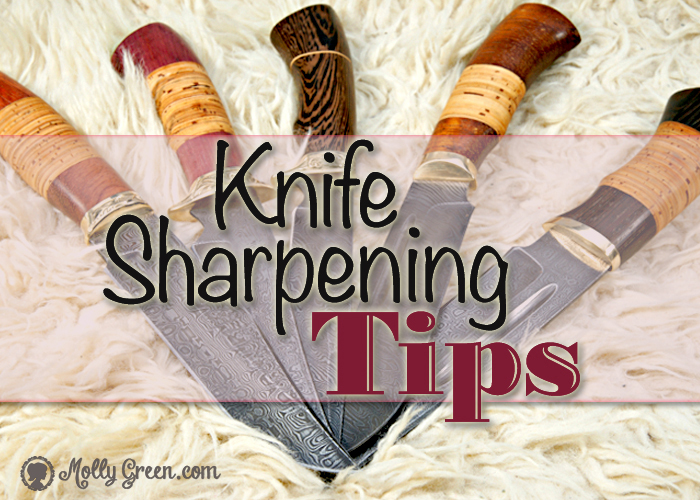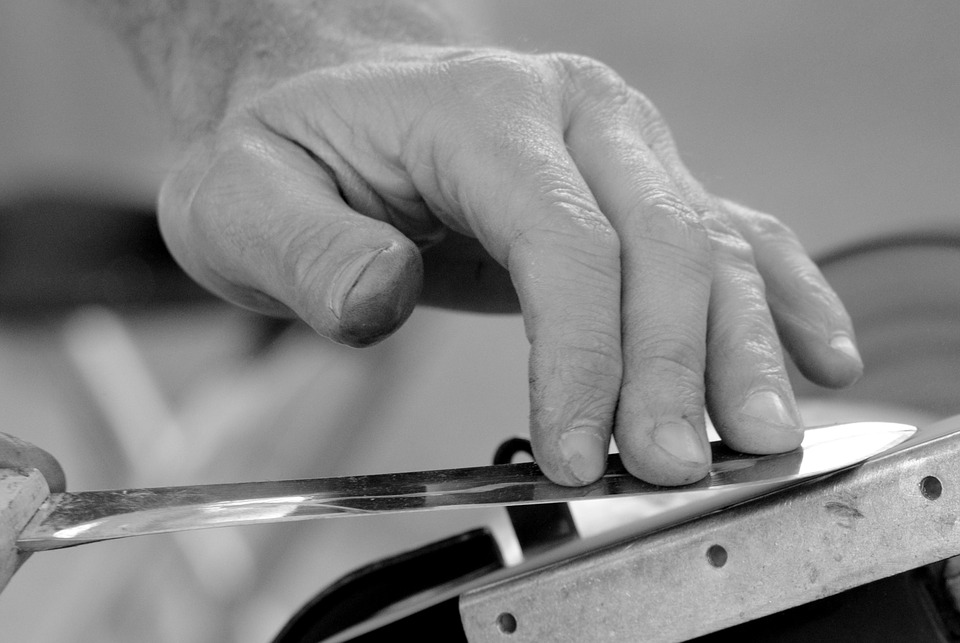
Getting ready for hunting season? Unfortunately, sharp knives are too often overlooked until they are needed. Arriving in the field with a dull knife not only makes the task of field dressing an animal more difficult, it is actually more dangerous, as forcing a dull knife makes an unfortunate slip much more likely.
Sharpening knives is not a difficult task, but it does require some time and patience. There are many systems for knife sharpening. Some, such as the Lansky® sharpening system provide careful control over edge angle; however, with practice, even a basic stone can provide good results.
For basic knife sharpening, you should get either a stone with a coarse grit on one side and a fine grit on the other, or have two stones. You will also want honing or mineral oil to keep your sharpening stones clear of debris.
How to Sharpen a Knife
Begin with the coarse stone, which is used to grind down the steel and create a new edge. Drag the knife across the stone from front to back, being careful to duplicate the edge angle with each pass. Flip your knife over and repeat on the other side until you’ve created a new edge. It may be wise to consider doing ten passes on each side repeatedly in order to keep the edge uniform on both sides of the blade.
The fine grit is used to sharpen. On the fine stone, swipe the knife edge across the fine grit in single strokes, alternating sides of the blade for each stroke. When the edge develops, you should end with a razor-sharp knife.
How to Tell if a Knife is Sharp?
There are about as many theories about testing knife sharpness as there are knives to test. Some like to test for a clean cut across a single sheet of newspaper. Others sharpen until they can shave patches of hair off their arms, with the unfortunate side effect of being suspected of having mange when they return to work. One effective method is the fingernail test.
A good sharp knife will try to bite into anything that it contacts at an angle just slightly steeper than the edge angle. Testing for bite on a thumbnail by laying the edge almost flat on the nail as though you were shaving it then gently trying to stroke over the nail will clearly demonstrate whether the edge has gotten fine enough to be sharp.
(NOTE: DO NOT CUT YOUR THUMBNAIL!) If it bites, it’s sharp … at least on that side. Flipping the knife over, and trying from the other direction should also produce a bite into the nail. If not, your knife has a bur on the blade. For other knife sharpening and safety tips please visit Buck Knives.
Burred edges occur when the edge metal has gotten very thin and rolled over to one side. While the burred edge may seem sharp from one side, as an actual cutting tool, it will leave your knife sub-standard. Often burrs are too small to be seen by the naked eye; however, the fingernail test will identify them without fail.
To remove a burr, simply go back to the sharpening step. With a fine stone, sharpen ten strokes on the side that the bur was on, then do the fingernail test again. You should find that now your blade is burred the other way. Do five sharpening strokes on that side, and test again. As you work the burr back and forth, the metal will get thinner and thinner. Eventually, the burr will get so thin that it will break off. The resulting scalpel edge will be spectacular!
Having a variety of sharp blades at the ready makes it easy to always have the proper tool for the job at your disposal.
Have a great hunting season!
Marc lives in the American Redoubt, with the wife, kids, dogs, and a variety of farm animals. He is a follower of Yeshua, homeschool dad, and loves God’s creation. He is blessed to live in the mountains and work from home. Visit our homestead on the Web at www.HomesteadOriginals.com.






Terrific article. My husband would certainly appreciate it. His knives are so sharp after he’s sharpens them we’re all a little nervous about using them. But, nothing beats a sharp knife in the kitchen.
A dull knife is more dangerous than a sharp one, and they’re very handy to have around! Thanks for reading, Sally!
-Molly Green Staff